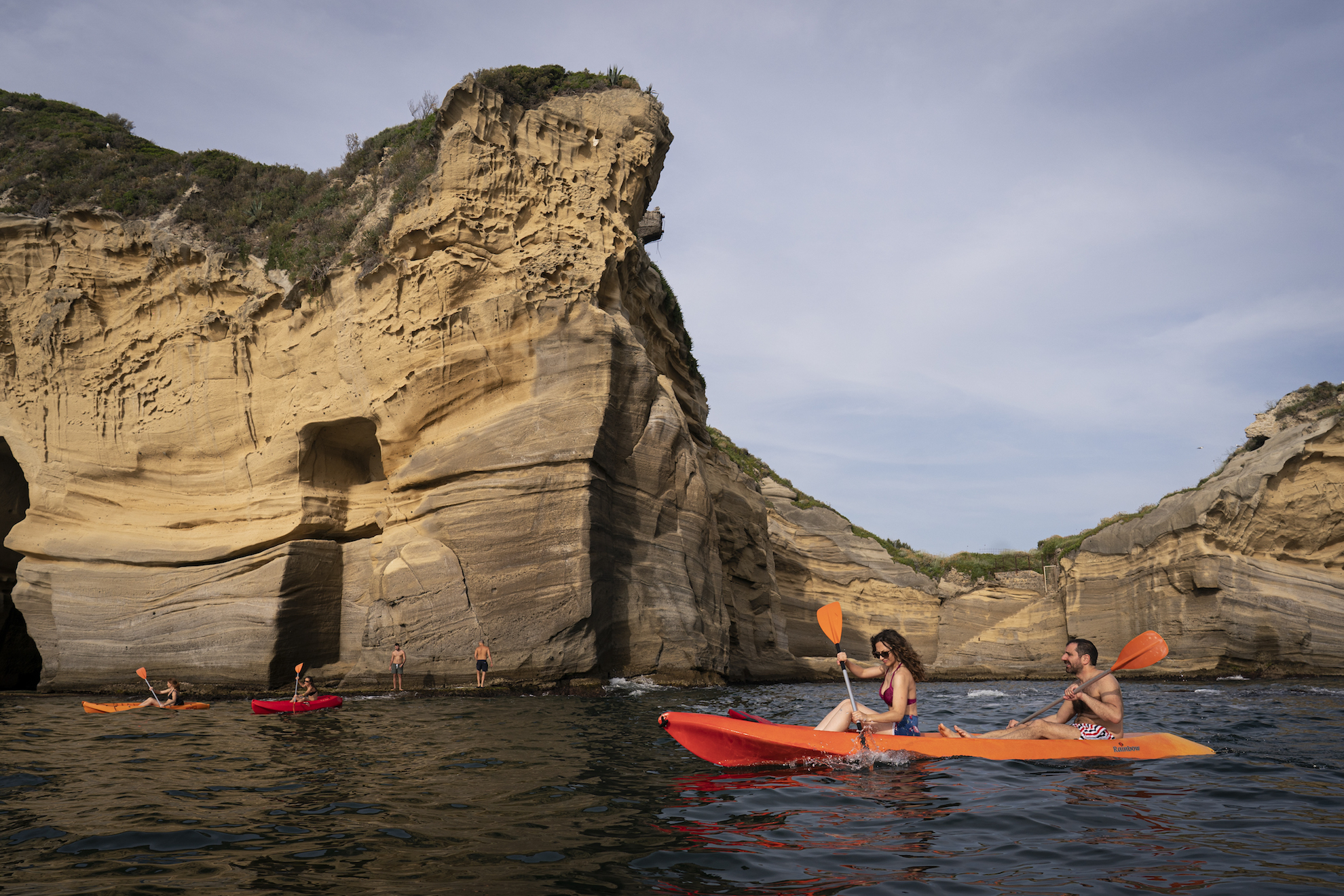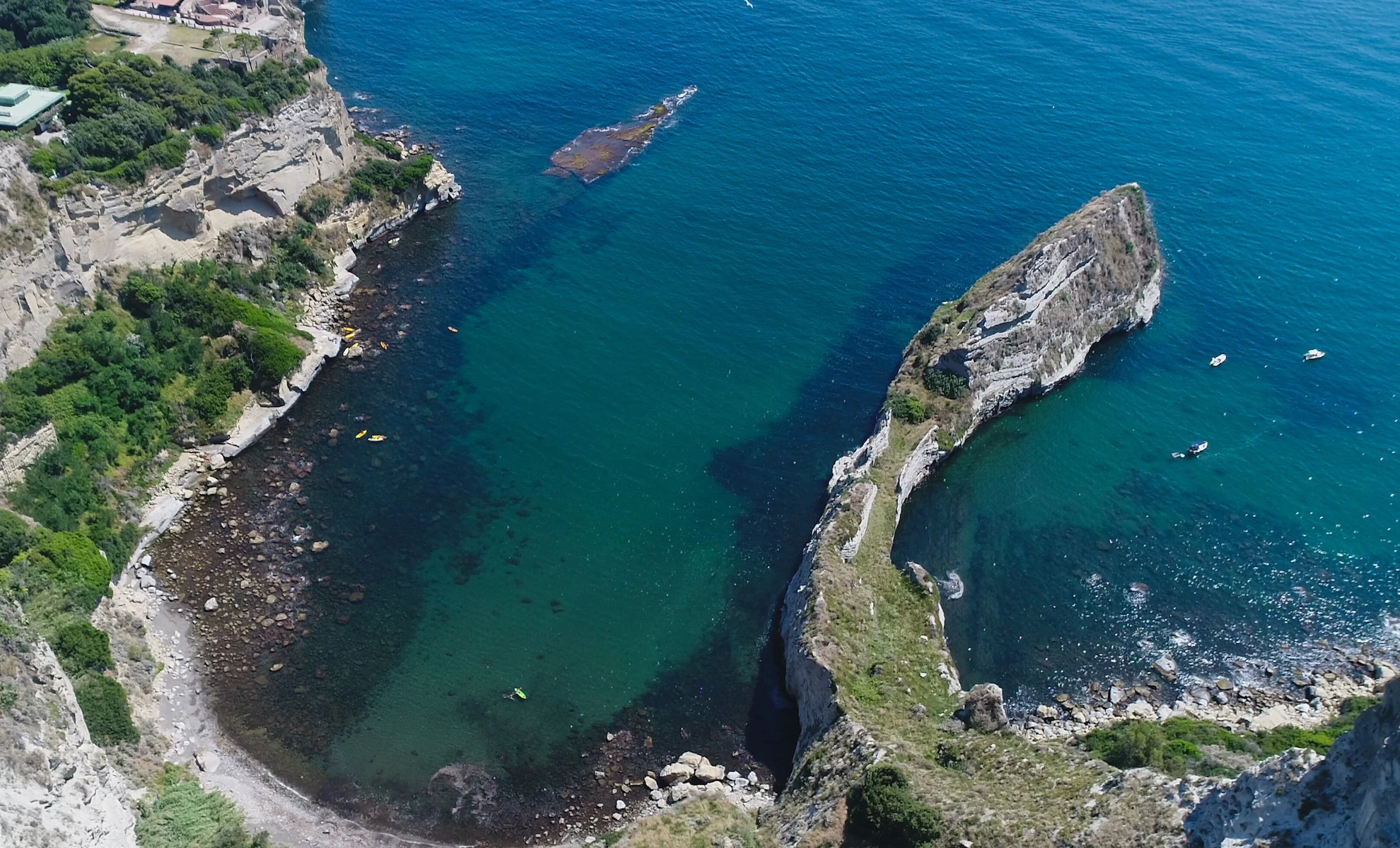When you look at it from the sea, the Bay of Trentaremi seems an exotic and distant place, detached from everything. From the city chaos, from the summer heat, from the noise of the ever-busy streets.
The green of the Mediterranean scrub intertwines with the yellow tuff | Ph. Roberto Salomone

The Mediterranean scrub grows so luxuriantly that it dominates every corner of the land until it reaches the sea. The yellow tuff rocks, of volcanic origin, drop steeply down to the sea creating a majestic and evocative spectacle: a natural amphitheatre, caressed by the sun and exploited by salt, lapped by a sea of such an intense blue that it does not seem like a city sea. Even the name Trentaremi seems to evoke distance: it makes you think of the strokes needed to reach this remote place that is part of Naples but so distant from it.
Kayaking is the best way to visit the bay | Ph. Roberto Salomone

Trentaremi has a very ancient history. Today it is part of the Marine Protected Area of Gaiola, a treasure trove of beauty and biodiversity that surrounds Naples and is especially enjoyable from the sea. We are on Posillipo, the hill where the ancients sought "moments of rest from pain" and stress, to honour the Greek origins of the name.
Ph. Roberto Salomone

The rocks surrounding the Bay of Trentaremi bear witness to the activities the Romans dedicated themselves to in this area in ancient times: the extraction of pozzolan, residues of which remain in the rock walls separated from the sea by beaches, which were once the quarry yards. Even Publio Vedio Pollione, a very wealthy Roman freedman who built an imperial-looking villa in Trentaremi with an impressive amphitheatre, used the quarries to increase his wealth. Trentaremi, bounded on the west by Punta di Cavallo, like the other places nearby, experienced the continuous coming and going of boats that loaded pozzolan and blocks of tuff to export them to distant places. Each load cost thirty "tareni" or "tireni", or thirty pieces of copper. Over time Trenta Tareni became Trentaremi.
The caves of the bay | Ph. Roberto Salomone

Today pozzolan is no longer extracted nor is yellow tuff exported, but what remains of such natural wealth is destined for the wellbeing and enjoyment of the Neapolitans and more adventurous tourists, who wish to discover this secret part of Naples.

